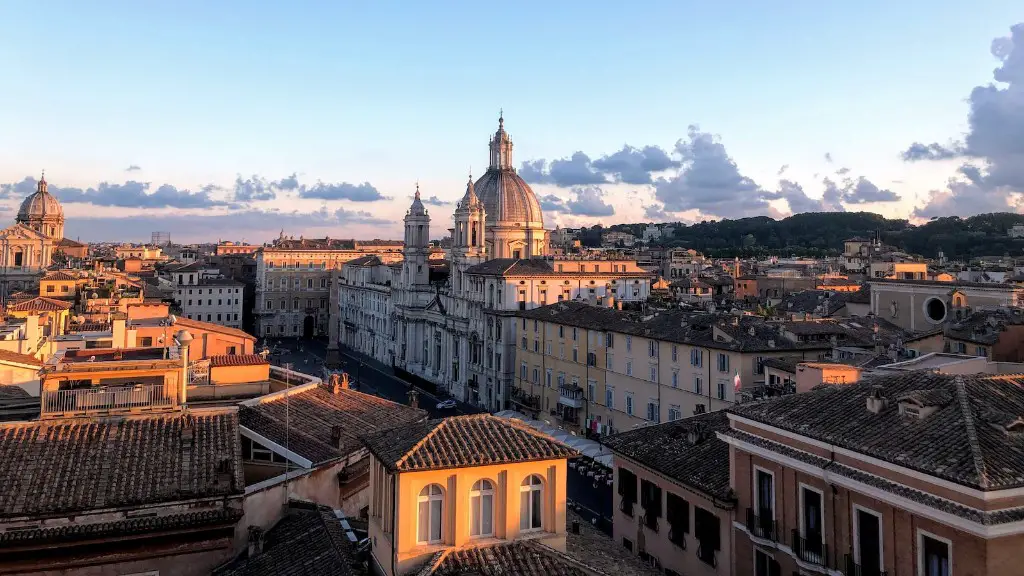Forms of Government
Ancient Rome is recognized for its ingenious form of government. The political organization of ancient Rome underwent several transformations. Despite its distinctive political system, the Roman state was characterized by a strong monarchy which conferred it with excellent stability.
Early Rome was governed by kings, who were elected from the most noble families. The role of the king was constrained by local magistrates, or public assemblies, and the Senate which was composed of aristocrats and representatives from the most wealthy families. There was also a tribal assembly, or Curia, which was concerned with religious and political decisions.
However, in 509 BC the Roman Republic was born and the Roman people had a new form of government which was characterized by several restraints on the powers of the monarchy. Monarchs were not allowed to pass laws, they could not raise taxes or declare wars. This change in government was symbolized by the expulsion of the last king, Tarquin the Proud.
The Roman Republic consisted of two consuls elected from the most powerful citizens. They were advised by a Senate, which had the power to pass laws. The Roman people still elected their leaders but the decision-making process was controlled by the aristocracy.
During the Republic, Rome developed its empire by conquering large areas of the Mediterranean. The Senate became more powerful as the empire expanded and the two consuls were replaced by two praetors in order to manage the conquered territories. This was one of the first forms of bureaucracy and allowed the Roman government to become more organized.
Division of the Roman Empire
In the first century BC, Rome underwent a series of changes in government. Julius Caesar assumed the role of dictator and divided the Republic into smaller administrative districts. This system of government was used to govern new territories which were not previously part of the Roman Empire.
After Julius Caesar’s death, his nephew Augustus assumed control of the Republic and it evolved into an imperial form of government. Augustus became the first Roman emperor and he was able to create an efficient bureaucracy which allowed him to effectively manage the empire.
Augustus successfully created a single, unified government where all the territories in the empire were subject to the same laws. He appointed a prefect in each region which was responsible for enforcing the laws and overseeing the Empire’s military and administrative activities. He decreed a uniform system of taxation, thus preventing the exploitation of any one region.
Under the Roman Empire, the Senate retained a great deal of decision-making power but it was increasingly subordinated to the emperor. The emperor was the most powerful figure in the government and had ultimate authority over all of the Romans.
The Fall of the Roman Empire
At the beginning of the 5th century, the Roman Empire was weakened by several external invasions and internal struggles. Over time, the bureaucracy and legal system of the Empire had become weak, and it was unable to resist the invading forces.
In 476, the last emperor of the Western Roman Empire was overthrown by a Germanic leader, Odoacer. This marked the end of the Roman Empire and the rise of the Germanic nations, who adopted their own forms of government.
The fall of the Roman Empire left Rome in a state of political and economic chaos. The new rulers of the city created a feudal system of government in which local lords had absolute power over their territories. This form of government was much different from the central Roman government and it caused great instability.
The Roman Empire had a profound influence on the Western world. Its government and legal system served as a model for many subsequent empires and its legacy is still evident today in the language and culture of the Western world.
The Legacy of Rome
The government of Ancient Rome has had a lasting impact on many countries throughout the world. The Roman legal system, including its emphasis on civil and criminal law, was adopted by many European countries. Roman architecture influenced many of the great cities of the world, including London and Paris.
The Roman language, Latin, is still learnt by many people around the world. The Latin language was the language of learning in Europe until the 18th century and its influence is still felt in the Romance languages, such as French, Spanish and Italian.
The government of Ancient Rome was also important in the development of democracy. The Republic of Ancient Rome served as a symbol of freedom. Its emphasis on civil and criminal law, representative government and stable bureaucracy served as a model for many democracies throughout the world.
Ancient Rome’s influence can still be felt around the world today. Its government, legal system, language and architecture have all contributed to the formation of modern society.
Conclusion
The government of Ancient Rome was an innovative and influential form of monarchy. Its laws and legal system served as a model for many other empires. Although Rome is no longer a major political power, its impact on the world is still felt today in its language, culture and system of government.

